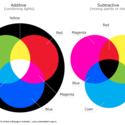The human eye is a sense organ adapted1 to allow vision by reacting to light. The cornea2 and the crystalline lens3 are both important for the eye to focus light.
The eye focuses light in a similar way to when you use a magnifying glass to concentrate the Sun’s rays onto a piece of paper. The distance from the magnifying lens4 to the piece of paper is the focal length5.
For the eye, light from distant objects is focused onto the retina6 at the back of the eye.
The eye is about the size of a table tennis ball, so the focal length needs to be about 2.5 cm.
The cornea does most of the focusing
About 70% of the bending of light takes place as it enters the cornea and the aqueous fluid.
This bending is possible because of the curve of the cornea as well as the change in refractive index as light moves from air into the cornea and then into the aqueous fluid between the cornea and the iris. Air has a refractive index of 1.00, and the aqueous fluid behind the cornea has a refractive index of 1.33.
If the change in refractive index was not as great, the light would not bend as much.
This becomes noticeable if you try to look at something when you are under water. Things appear out of focus because the cornea is designed to work with light passing into it from air rather than from water. Wearing swimming goggles under water allows the layer of air to be present.
The crystalline lens and accommodation
Behind the aqueous fluid is the second lens system. It consists of a convex lens that is soft and pliable. The ciliary muscle7 is a circular ring of muscle8 that attaches all the way around the lens. This ciliary muscle can change the shape of the crystalline lens by stretching it at the edges. It is attached to the lens by zonules (ligament fibres that can be tight or loose).
When you are looking at a near object, the lens needs to become more rounded at the central surface in order to focus the light rays. This ability to change focus for close-up objects is called accommodation9.
Two totally opposite theories for accommodation
There are two main theories for how the lens changes shape.
- Helmholtz theory – proposed in 1855. When the ciliary muscle contracts, all zonular tension10 is reduced. This permits the central lens surface lens to become rounder (increases its focusing power). When the ciliary muscle relaxes, all zonular tension is increased, causing the lens to flatten (decrease in optical power).
- Schachar mechanism – proposed in 1992. When the ciliary muscle contracts, equatorial zonular tension is increased. This causes the central lens surface to become more steeply rounded (increases central optical power). When the ciliary muscle relaxes, equatorial zonular tension is reduced, causing the central lens surface to flatten (decrease in optical power).
The Schachar mechanism can be demonstrated using a Mylar balloon (a shiny silver11 flat balloon that is often used with helium12). If you look at your reflected image on the flat side of the balloon, you will notice that it becomes smaller if you pull the edges of the balloon outwards. This is because the centre of the balloon becomes more convex.
Loss of accommodation
As we age, the ability of the ciliary muscle to change the shape of the crystalline lens lessens. For most people, their ability to focus on close-up images decreases, but distance vision is unaffected. This is known as presbyopia and is one reason that older people often need reading glasses.
According to the Helmholtz theory13, the lens becomes harder as people age. This means that the ciliary muscle is no longer able to sufficiently change the shape of the lens.
According to the Schachar theory, the lens does not lose any of its flexibility with age. Rather, a loss of accommodation is caused because the lens continues to grow slightly with age. This increase in size means that the distance between the lens and the ciliary muscle decreases, which means that the ciliary muscle is not able to provide the same tension to the edges of the lens.
Nature of science
When an alternative proposal of how something works is suggested, there is often a long process of discussion and experiment before the new idea is either disregarded or accepted. For example, since Dr Schachar proposed an alternative mechanism of how the ciliary muscles change the shape of the lens, there has been much argument and counter-argument. After nearly 20 years, the debate is still on-going.
Related content
Our eyes – our vision describes some of the eye conditions14 that can affect human vision.
Improving vision screening for children describes how a peer-to-peer vision testing project hopes to alert students to eye conditions that affect their vision.
Activity idea
The activity Eye dissection uses cows’ eyes to observe many of the parts found in a human eye.
The activity Labelling the eye uses an interactive or paper-based resource to identify and label the main parts of the human eye.
- adaptation: A change in the structure or function of something. In biology, a change in a species, as a result of natural selection. Individuals with a particular feature (adaptation) are more likely to survive and reproduce than individuals without this feature.
- cornea: The transparent front part of the eye that contributes substantially to the eye’s ability to focus light onto the retina.
- crystalline lens: The internal part of the eye that helps to focus incoming light rays onto the back of the eye. Its shape can be altered by a set of muscles and ligaments allowing the eye to accommodate for near or far vision.
- lens: A piece of glass or other transparent material with at least one curved surface. Lenses are used to change the direction of light rays that pass through them (focusing or dispersing the rays).
- focal length: A measure of how effectively a curved mirror or lens converges or diverges incident light. A shorter focal length for a mirror or lens indicates a greater optical power.
- retina: A light-sensitive tissue lining the inner surface of the eye. It houses two types of photoreceptor cells – rods and cones.
- ciliary muscle: A ring of smooth muscle fibres that is responsible for changing the shape of the crystalline lens in the eye.
- muscle: The tissue that makes it possible for an animal to move and to maintain its posture. Muscles also make the heart beat, force blood to circulate and move food along the digestive system. The human body has more than 600 muscles.
- accommodation: The process by which the eye changes the shape of the crystalline lens to maintain a clear image of an object as its distance from the eye changes.
- tension: A force tending to stretch or elongate something.
- silver: A transition metal in Group 11 of the periodic table – symbol Ag, atomic number 47.
- helium: (He) A colourless, odourless inert gaseous element occurring in natural gas and with radioactive ores.
- theory: To scientists, a theory provides a coherent explanation that holds true for a large number of facts and observations about the natural world. It has to be internally consistent, based upon evidence, tested against a wide range of phenomena and demonstrate problem solving.
- condition: An existing state or situation; a mode or state of being.


